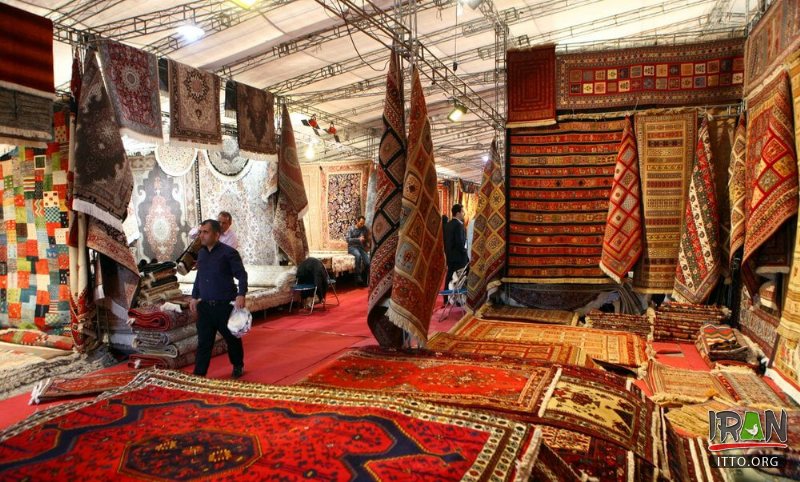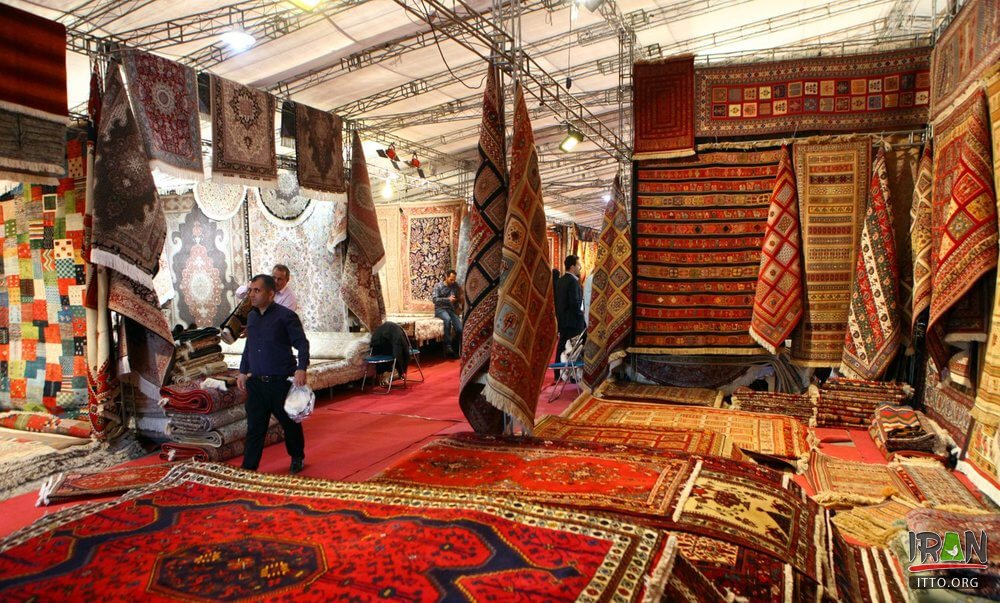A large number of people from four corners of the world are visiting Tehran to avoid missing the eagerly-awaited display of one of the most elegant artworks in the world.
The exquisite carpets and rugs have been rolled out in the Iranian capital to once again dazzle the visitors’ eyes with their intricate and magnificent patterns and colors.
The 28th Iran Handmade Carpet Exhibition is offering the unique products collected from different parts of the land in a bid to attract people inside and outside the country.
The industry is now more in the limelight as it could fetch the country foreign currencies amid the tough US sanctions. Customers beyond Iran’s borders cannot replace the genuine Iranian-made handwoven carpets with other countries’. That’s why more and more foreigners are visiting the fair regardless of political issues and sanctions.
The organizers of the exhibition have primarily focused on facilitating the export of handwoven carpet to different parts of the world.
The Iran National Carpet Center, the sponsor and organizer of the event, has provided special concessions for the visiting foreign businessmen.
A number of business and trade delegations from various countries are holding talks with Iranian producers and exporters at the fair.
The exhibition, which is underway until August 31, hosts almost 700 producers, export companies, research centers and manufacturing units representing the country’s carpet industrialists and waevers.
Safar Amani, the head of the Syndicate for Handwoven Carpet Producers of East Azarbaijan, told Iran Daily, “According to Ministry of Cooperatives, Labor, and Social Welfare, carpet-weaving is top in occupational classification of East Azarbaijan Province.”
Based on the statistics of Iran’s Trade Promotion Organization, 35 percent of the Iranian handwoven carpets exported to foreign countries are the products of East Azarbaijan Province, Amani added.
Over 500,000 families in the province are involved in carpet-weaving industry, he said.
Speaking about the high quality and long history of Tabriz handwoven carpets, he boasted that Iran’s carpet is known to the world by Tabriz carpet.
High-quality materials, attractive motives and high density are among the distinguishing features of the province’s carpets, he explained.
A special knot called symmetric or Turkish knot is used in the carpets, which makes the product stronger and durable, he elaborated.
The Syndicate for Handwoven Carpet Producers of Yazd Province head Abbas Kargar said that the central province has 10 carpet syndicates with 16,000 weavers.
Unlike almost all Iranian carpet weavers, who use New Zealand wool, Yazd’s artists make use of domestic wool that prevents delicate fibers from being flattened by heavy objects like furniture.
Deep-pile carpets of Yazd are highly used inside the country due to its fluffy surface, which makes them comfortable for sitting, he noted.
In addition, North American countries and European countries welcome Yazd carpets due to its thickness and comfort for cold temperatures, he continued.
Hamid Miri, a carpet weaver and producer of Kashmar in Khorasan Razavi, said that Afshan and bowl are the original designs of the carpets in the region.
Unlike paired knots, which are not very strong, Persian weaving style (known as asymmetrical knotting) and Turkish knotting are two popular carpet weaving knots that make the products strongly-knitted.
Dividing carpet dyeing into industrial and herbal ones, Miri said chemical colors are used in industrial type, but the herbal one needs grape leaves for yellow hue, walnut shell for brown, Rubia tinctorum for red and onion skin for lime.



